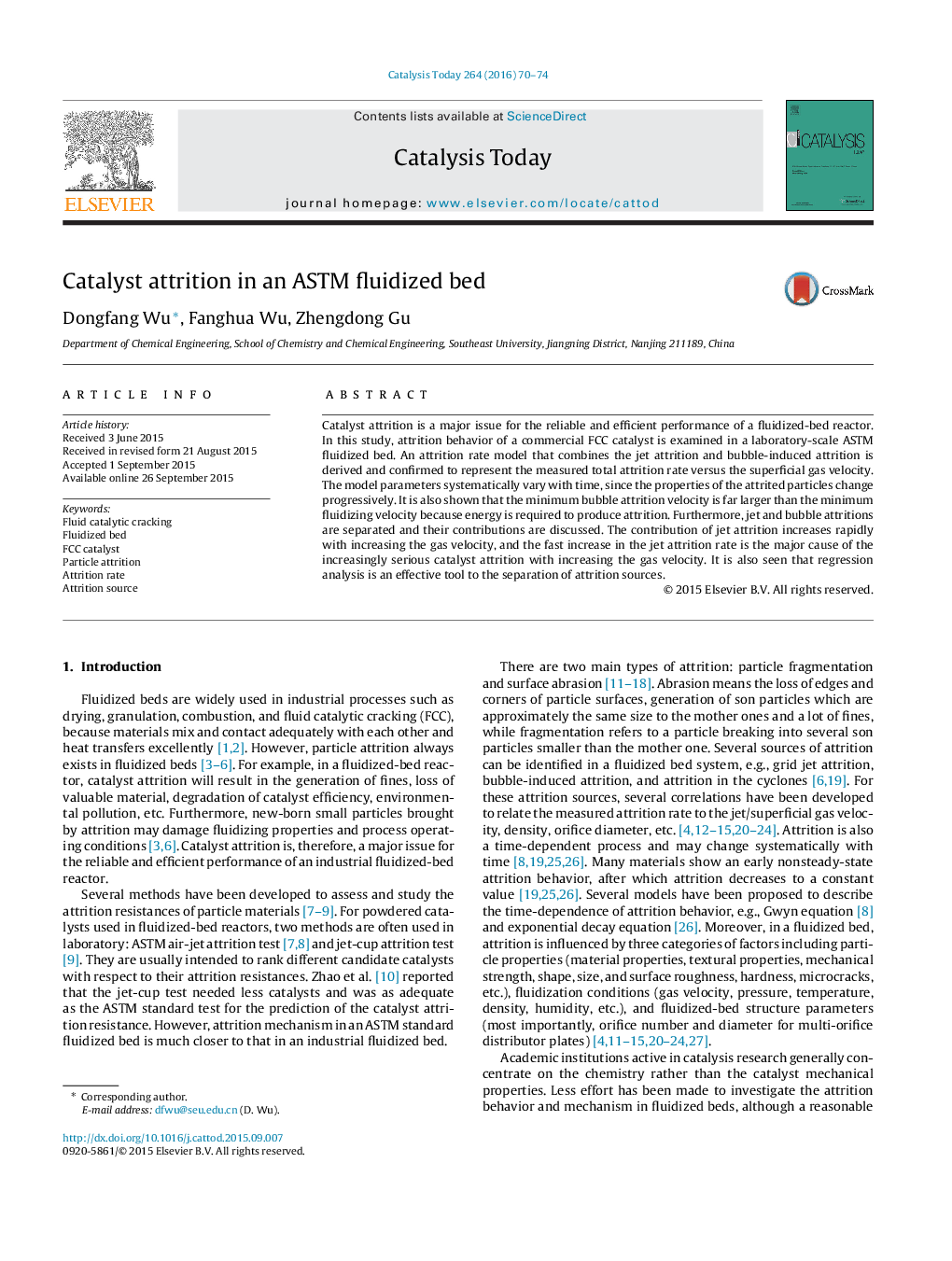| Article ID | Journal | Published Year | Pages | File Type |
|---|---|---|---|---|
| 53298 | Catalysis Today | 2016 | 5 Pages |
•A model is derived and confirmed to represent the measured total attrition rate.•A simple regression analysis is used to separate total attrition into two sources.•Contribution of jet attrition increases rapidly with increasing the gas velocity.
Catalyst attrition is a major issue for the reliable and efficient performance of a fluidized-bed reactor. In this study, attrition behavior of a commercial FCC catalyst is examined in a laboratory-scale ASTM fluidized bed. An attrition rate model that combines the jet attrition and bubble-induced attrition is derived and confirmed to represent the measured total attrition rate versus the superficial gas velocity. The model parameters systematically vary with time, since the properties of the attrited particles change progressively. It is also shown that the minimum bubble attrition velocity is far larger than the minimum fluidizing velocity because energy is required to produce attrition. Furthermore, jet and bubble attritions are separated and their contributions are discussed. The contribution of jet attrition increases rapidly with increasing the gas velocity, and the fast increase in the jet attrition rate is the major cause of the increasingly serious catalyst attrition with increasing the gas velocity. It is also seen that regression analysis is an effective tool to the separation of attrition sources.
Graphical abstractFigure optionsDownload full-size imageDownload high-quality image (58 K)Download as PowerPoint slide
